Very rarely has a manager dominated their domestic league over a three season period like BSC Young Boys’ Gerardo Seoane. The Swiss manager has led his Bern-based team to a shocking 81 points in 35 matches this season, nearly 30 more than second place FC Basel on 53. With his unique style of football and winning mentality, a host of Bundesliga clubs were interested in securing the signature of Seoane, with the Swiss ultimately signing on for Bayer Leverkusen. So ahead of Gerardo Seoane’s move to the Bundesliga, we take a look at the tactics he deployed in his three season spell with BSC Young Boys.
system of play: 4-4-2
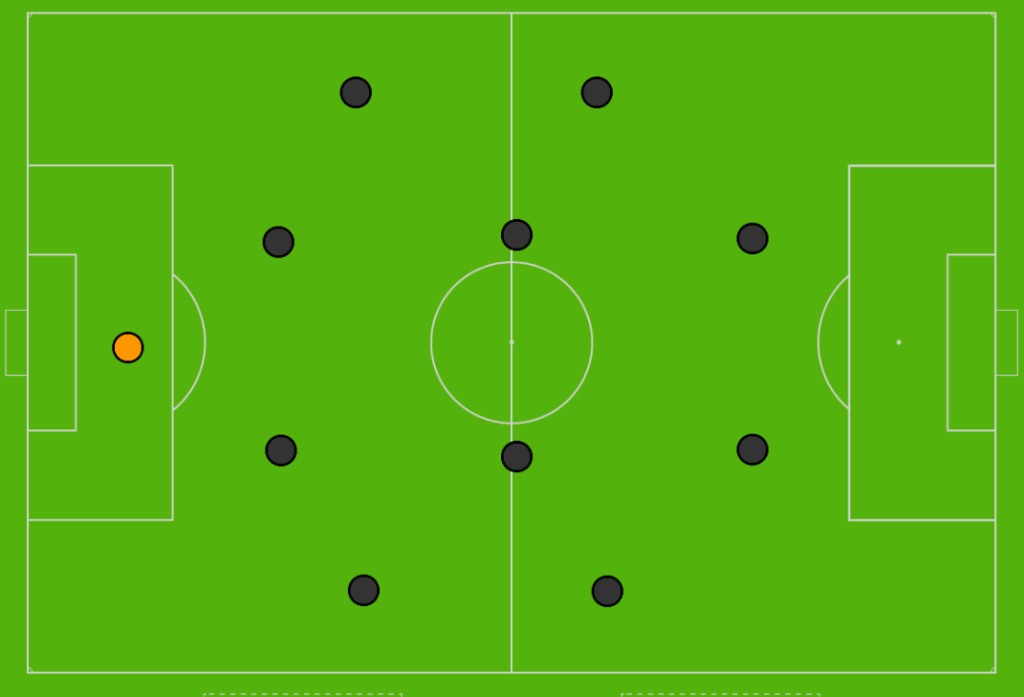
BSC Young Boys have operated in a 4-4-2 formation throughout their time under the influence of Seoane. The formation often adapts to look more like 2-4-4 in attacking phases, with the wingers inverting and the fullbacks high and wide. In truth, the formation is also very similar to 4-2-2-2, as the wingers remain inverted in many phases of the game, particularly attacking ones.
33-year-old Fabian Lutsenberger is the most recognizable name in the team, and has played an important role in Seoane’s back-line this season. He’s been partnered with the excellent Guinean Mohamed Aly Camara, with two ball-winning central midfielders operating in front of them. Former Benfica and Ajax man Miralem Sulejmani is another recognizable name in the team and often competes for a place on the wing, while right-back Silvan Hefti has been a standout in the side. The greatest attacking weapons in the team are Christian Fassnacht, who has 9 goals and 6 assists in the league this season, and the Swiss league’s top scorer Jean-Pierre Nsame, who’s bagged 19 goals with 8 assists.
Crucial to the way Seoane plays is a particular narrowness in both attacking and defensive phases. The width in attack often comes from the fullbacks as the wingers invert. This aids in the team’s long ball approach as they tend to hit passes from deep into the narrow front four. In defense they also look to remain narrow, in a compact 4-4-2 block.
long ball approach
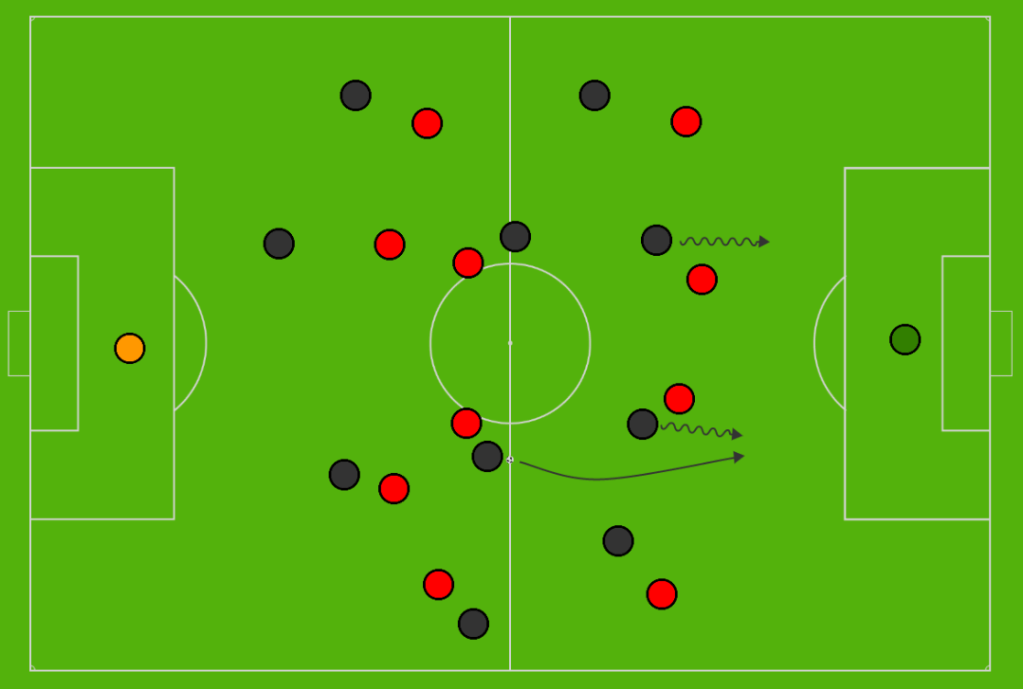
A bit unusual for a team atop the table in their domestic league these days, BSC Young Boys play a direct style of football that incorporates long-passes from deep. These passes most frequently come from the centre-backs and central midfielders, with Lutsenberger in particular an outstanding spreader of the ball. This directness means that BSC Young Boys often have a quick route into their strikers. Both Jordan Siebatcheu and Jean-Pierre Nsame are both adept in the air and stand at 6’2, but none of the other attackers are particularly tall. Meschack Elia is only 5’6, and is generally the one to run in behind Nsame as a result. Instead of being hit particularly high into a striker to knock down, these long passes are often hit quite low and/or give their players an opportunity to run in behind. Instead of looking for the man, the long passer is often looking for the space that the man can run into.
In build-up phases, the positioning of the central midfielders to come deeper towards the ball is often one quick route by which Young Boys open up space to hit these longer passes into wide channels, where strikers are ready to run in behind or wingers remain inverted. Then despite the narrowness of their attack, they also like to maximize their delivery of crosses, such as from the wingers, fullbacks or central midfielders. With the wingers inverted and dropping deep, the fullbacks often have loads of room to advance in the wide areas. This can be seen even when delivering long passes from deep, as the fullbacks push much higher up the pitch than you might expect of a team playing 4-4-2.
attacking principles
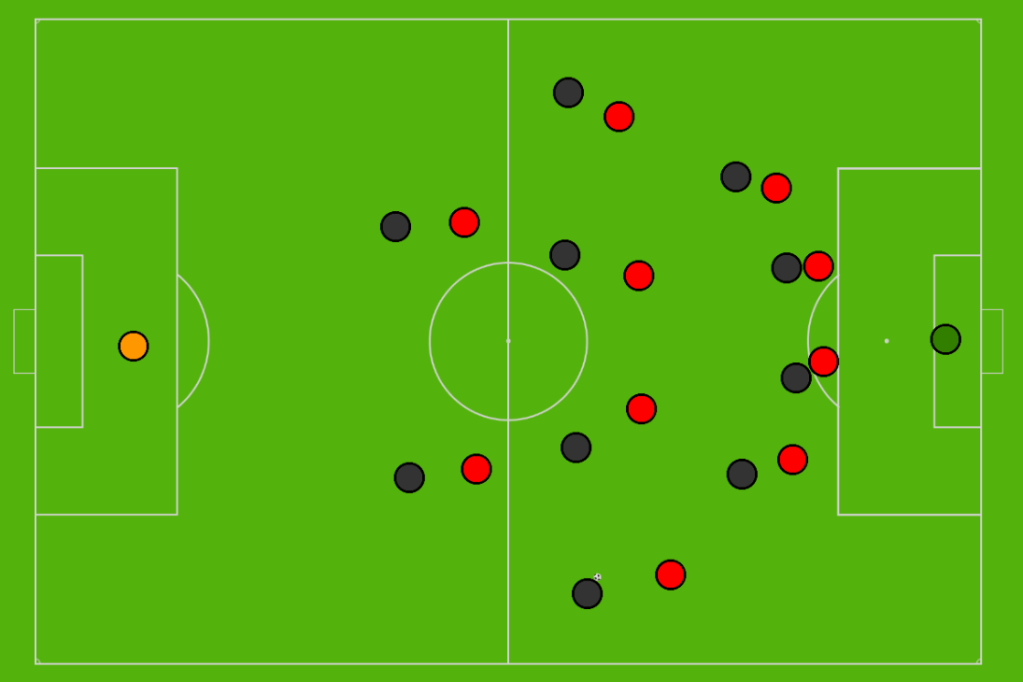
Gerardo Seoane’s directness leads to a different but exciting attacking style of football. In addition to verticality, the team will often favour the right, where Christian Fassnacht and Silvan Hefti operate. Hefti is the leader in touches in the team, but also has the second most amount of touches in the attacking third, behind only Fassnacht. Young Boys Bern looking to play through him and utilize his ability on the ball is quite an interesting facet of a 4-4-2 formation that favours directness and long-passes.
In the front two, Seoane has an old-school pairing of a big target man alongside a quicker, fox in the box. Both Jean-Pierre Nsame and Jordan Siebatcheu occupy opposition defenders excellently well and take up much attention whenever they have the ball at their feet. This allows the smaller and quicker Elia to constantly run in behind. Elia’s cheetah-like speed is enough to trouble any opposition defense and offers Young Boys the advantage of getting on the end of their long-passes, or even having a body to get on the end of rebounded shots quicker than any defender can react.
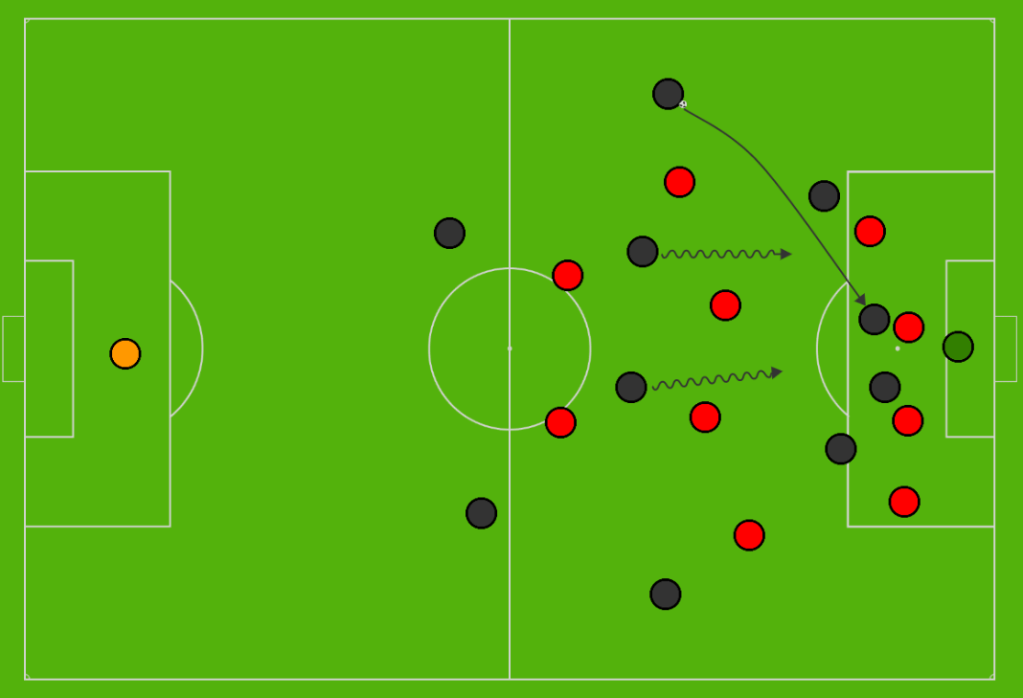
In addition to looking to get the ball into their strikers quickly is an overall emphasis on speed, whether they utilize the wide areas to do so or go more direct. This speed is achieved just from general quickness to their play, whether it be shorter, one-touch moves, or running with the ball at speed up the field. It is also achieved by the fact that when attacking, all players look to make vertical runs toward the box. They can then flood the box in numbers and convert from a cross before anyone else has time to react. In short, Young Boys Bern don’t waste any time in getting forward, and it’s one of the main reasons why they’ve scored 70 goals already this season.
pressing
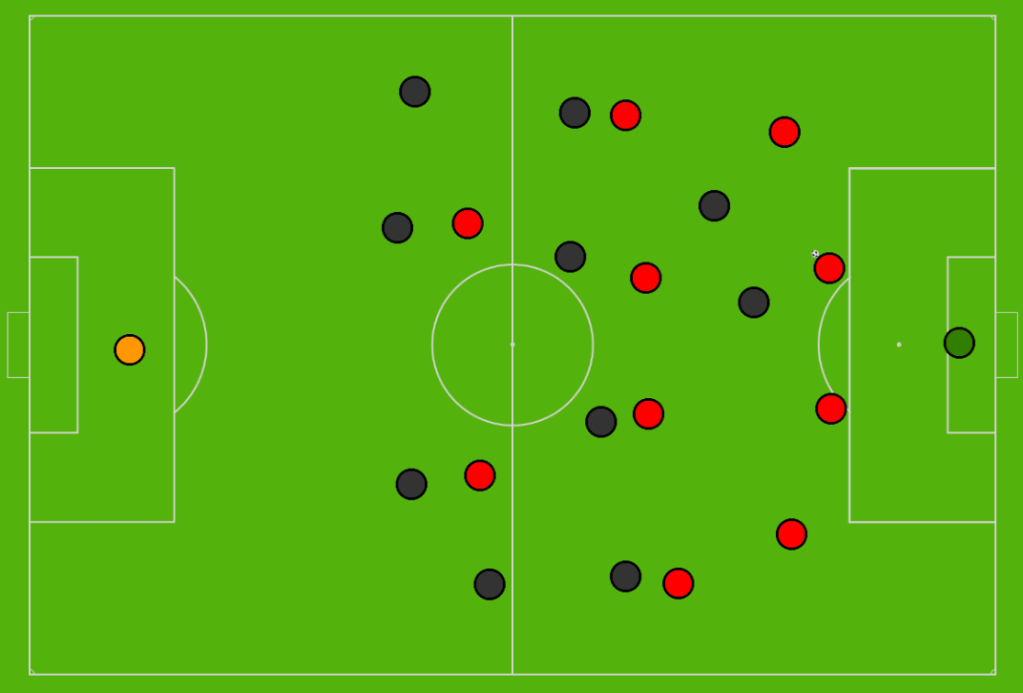
BSC Young Boys’ success is not only predicated around an ability to bang in the goals, but an astute ability to defend. Their press from the front is aggressive and successful, with Young Boys consistently toward the top of the tackling and interception charts in the Europa League. Although the 4-4-2 is their most common defensive shape and a mid-block may take place, the side often press in their attacking 2-4-4 shape. This again involves the fullbacks high up the pitch and actively involved, and the wingers inverted. For a team that attempts to hit so many longer passes, it’s very normal that they would also press in their attacking shape, as sometimes these passes simply don’t come off. This allows Young Boys to be fairly rigid between both defense and attack and not have to adapt their principles of play too much between phases. In other words, they are well set up to counter-press.
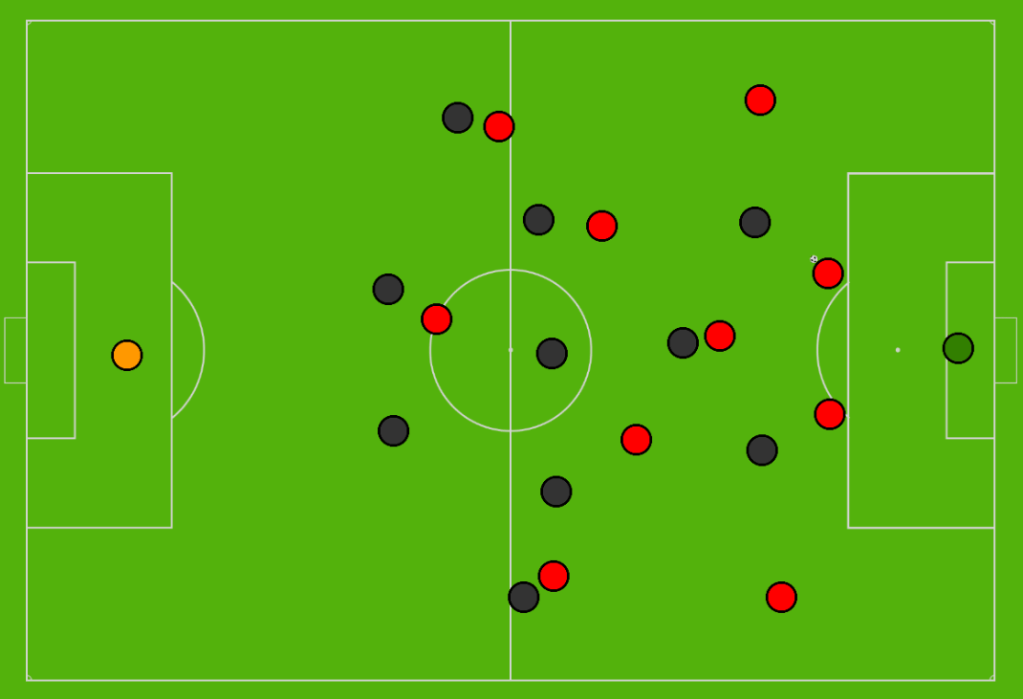
Against a midfield three, Seoane may adapt his principles of play to look more like 4-3-1-2 in the press, as one central midfielder pushes up to stop the opposition’s defensive midfielder. The fullbacks will then remain locked on the opposition wingers/wing-backs, as the wide men invert inside as part of the pressing trio. Crucial to the process are the front two, who often move left to right together and look to cut off passing angles into wide areas, and force the opposition inside to the central midfielders to pounce.
Their press also becomes particularly aggressive and successful in wide areas, as the central midfielder, fullback and inverted winger will often combine in a triangular shape to shut attacks down. The fullbacks are often the top tacklers in the team, with Silvan Hefti also the team’s leader in number of pressures.
With all of these defensive principles in mind, Seoane’s led his team to concede just 27 goals in 35 matches, and keep 16 clean sheets.
concluding thoughts
Gerardo Seoane has implemented an attack-minded, exciting brand of football, that should serve the Bundesliga well next season. Seoane should prove to be a great managerial signing for Bayer Leverkusen, and at only 42-years-old is still a relatively young manager with loads of time to develop. His BSC Young Boys team won three domestic titles in his three seasons in charge, and Bayer 04 will be hoping that the Swiss manager is the man that can change all of their fortunes around for both the short-term and long-term future.
So there it is! A tactical analysis of Gerardo Seoane’s BSC Young Boys. Be sure to check out more of our tactical analyses and follow on Twitter @mastermindsite. Thanks for reading and see you soon!
You might also enjoy…
-> Xavi Hernandez – Al Sadd – Tactical Analysis
-> Marcelo Gallardo – River Plate – Tactical Analysis
-> Erik Ten Hag – Ajax – Tactical Analysis

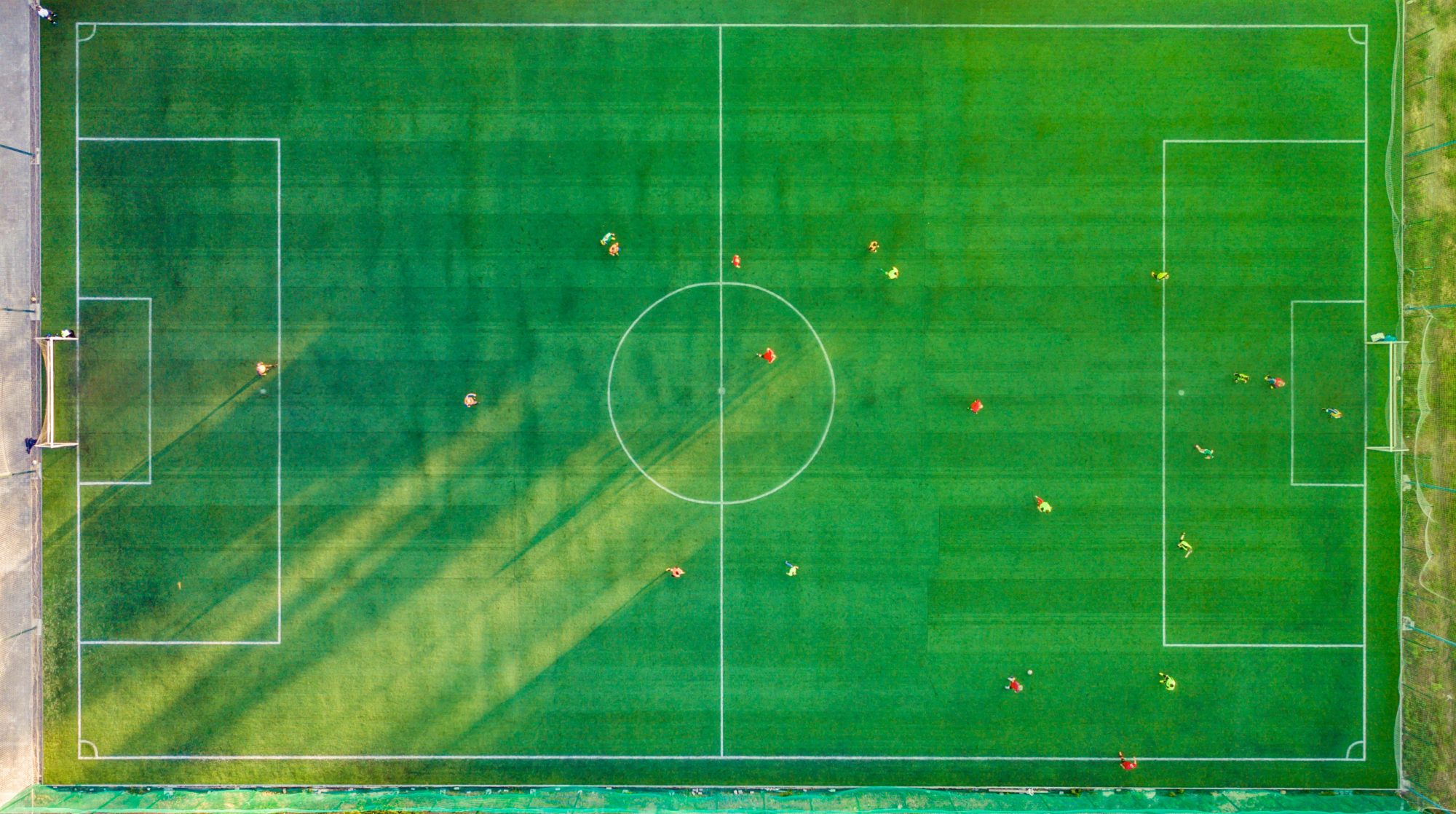
4 thoughts on “Gerardo Seoane – BSC Young Boys – Tactical Analysis”